Davis Lockstation
| < Chaffeys Lockstation | Jones Falls Lockstation > |
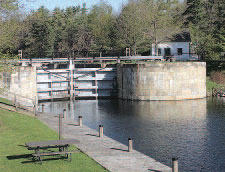 The lock at Davis was rebuilt in 1982 following a structural failure. © Parks Canada |
152,0 km – 152,1 km
Davis Lockstation is the most isolated of all the Rideau lockstations. The single lock is in a short excavated channel and established navigation between Opinicon Lake and Sand Lake. Earthen embankment dams and a single weir cross the river, establishing the slackwater section above it.
One lock – A manually operated lock with a lift of 2,7 m. The lock was rebuilt in 1982 in its original position.
Earth embankment dams – Two earth embankment dams with combined length of 40 m, and height of 4,0 m, 1829. CRM1.
Weir – A reinforced concrete stoplog weir with one bay, 1920. CRM2.
Defensible lockmaster’s house – A one-storey stone building, 1842. A summer kitchen was added in 1898.CRM1.
Lockstation office – A two-storey frame structure, 1875. CRM2.
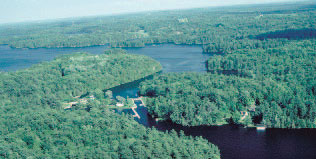 The Davis Lockstation was built in a narrow, natural river gorge that connected Opinicon Lake (bottom) and Sand Lake (top). © Parks Canada |
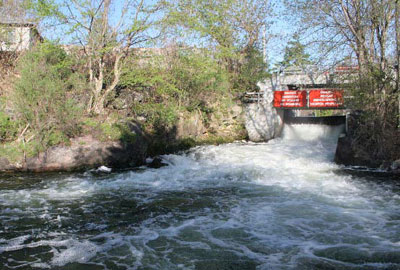 The earth embankment dams and weir at Davis Lockstation raised the level of Opinicon Lake. © Parks Canada |
Davis Lockstation to Jones Falls Lockstation
152,1 km – 159,0 km
The construction of a stone arch dam at Jones Falls enlarged Sand Lake for navigation.
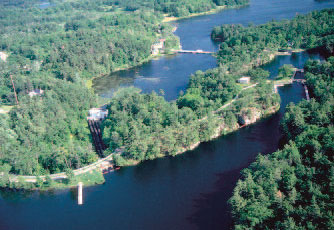 The locks and dam at Jones Falls Lockstation rise19 m. It was the most complex construction project undertaken for the Rideau. © Parks Canada |
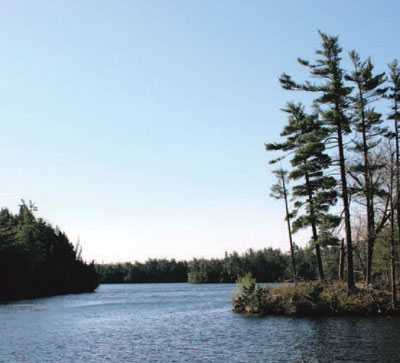 From Sand Lake to the Jones Falls Lockstation the navigation channel winds through islands of pre-Cambrian rock created by the Frontenac Arch. © Parks Canada |
| < Chaffeys Lockstation | Jones Falls Lockstation > |
Related links
- Ottawa Lockstation
- Hartwells Lockstation
- Hogs Back Lockstation
- Black Rapids Lockstation
- Long Island Lockstation
- Burritts Rapids Lockstation
- Nicholsons Lockstation
- Clowes Lockstation
- Merrickville Lockstation
- Kilmarnock Lockstation
- Edmonds Lockstation
- Old Slys Lockstation
- Smiths Falls Combined Lockstation
- Smiths Falls Detached Lockstation
- Poonamalie Lockstation
- Beveridges Lockstation, Tay Canal
- Perth, Tay Canal
- The Narrows Lockstation
- Newboro Lockstation
- Chaffeys Lockstation
- Jones Falls Lockstation
- Upper Brewers Lockstation
- Lower Brewers Lockstation
- Kingston Mills Lockstation
- Date modified :